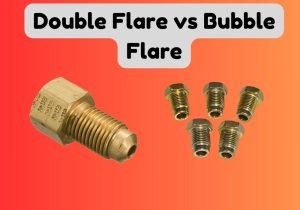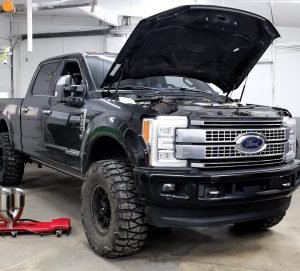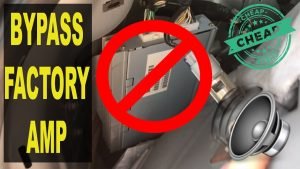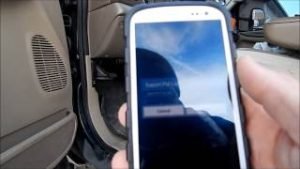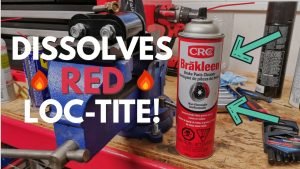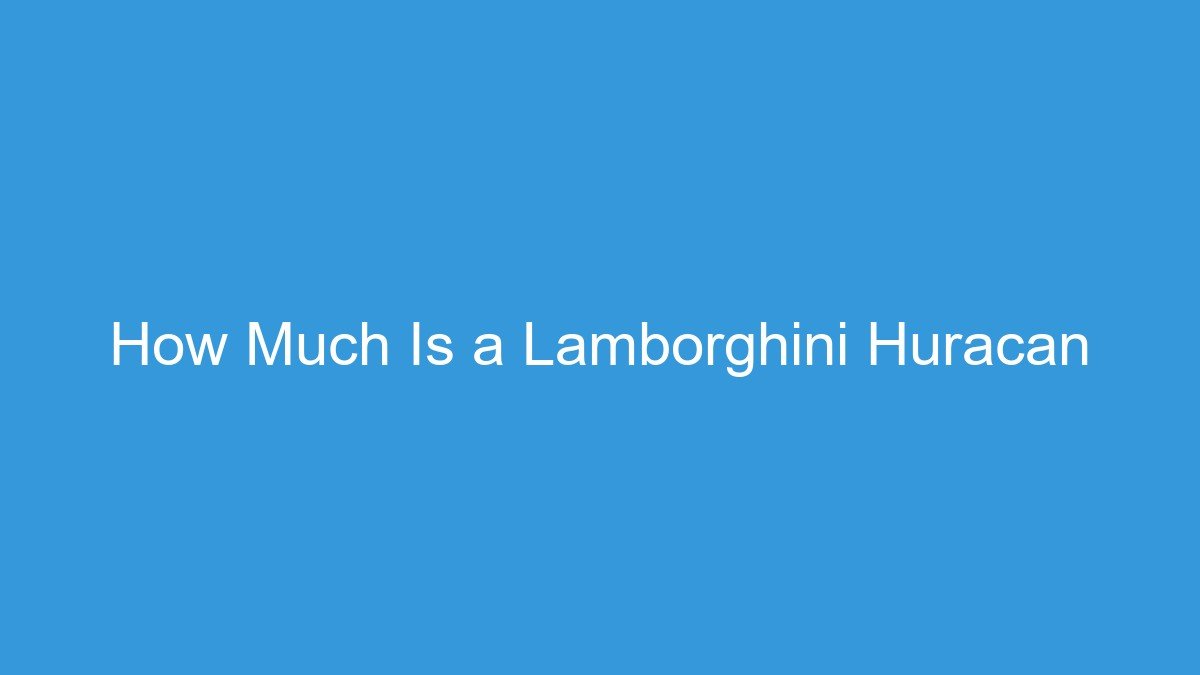
Ah, the Lamborghini Huracan! A symphony of speed, a masterpiece of design, and a dream for countless automotive enthusiasts. If you’re here, chances are you’ve fallen under its spell and are wondering: “How much does that dream machine actually cost?”
It’s an exciting question, and the answer, as you might expect for a supercar, isn’t a simple one-liner. The price of a Lamborghini Huracan goes far beyond the initial sticker, encompassing a range of factors from the specific model and options to the ongoing costs of ownership.
Don’t worry, we’re here to help you navigate the thrilling (and sometimes daunting) world of supercar pricing. In this detailed guide, we’ll break down everything you need to know, in a friendly and helpful way, so you can truly understand the investment involved in owning a piece of automotive art.
Contents
- The Lamborghini Huracan: A Symphony of Performance
- Part 1: The Initial Purchase Price (New & Used)
- Part 2: Beyond the Sticker Price – The True Cost of Ownership
- Part 3: Step-by-Step: Estimating Your Huracan Cost
- Part 4: Tips for Potential Lamborghini Huracan Owners
- Part 5: Common Mistakes to Avoid
- Conclusion: The Dream is Attainable, With Planning
- FAQ
- Related Articles
🛒 Recommended Product
The Lamborghini Huracan: A Symphony of Performance
Before we dive into the numbers, let’s briefly appreciate what makes the Huracan so special. Launched in 2014 as the successor to the immensely popular Gallardo, the Huracan quickly established itself as a benchmark in the supercar segment. With its naturally aspirated V10 engine, razor-sharp handling, and unmistakable design, it delivers an intoxicating driving experience. Over the years, Lamborghini has released several thrilling variants, each with its own unique character, affecting the price significantly.
Part 1: The Initial Purchase Price (New & Used)
This is where most people start their journey. Understanding the difference between a new and pre-owned Huracan, and the various models, is crucial.
1. Brand-New Lamborghini Huracan Prices
Buying a new Huracan means you’re getting the latest technology, a full warranty, and the joy of being its first owner. However, it also means paying the premium.
Generally, a brand-new Lamborghini Huracan starts in the mid-$200,000s and can easily climb well over $300,000, even approaching $400,000+ depending on the specific model, options, and customization.
Here’s a breakdown of common variants and their approximate starting prices (these are estimates and can vary significantly by year, region, and market conditions):
- Lamborghini Huracan EVO RWD (Rear-Wheel Drive): This is often the “entry point” to the Huracan lineup, offering a pure driving experience. Expect starting prices around $210,000 – $220,000.
- Lamborghini Huracan EVO AWD (All-Wheel Drive): Offering more grip and stability, this variant is slightly pricier. Starting around $240,000 – $250,000.
- Lamborghini Huracan EVO Spyder (Convertible): For those who want to feel the wind in their hair (or on their scalp!). Convertibles always come with a premium. Starting around $270,000 – $280,000.
- Lamborghini Huracan Tecnica: A more track-focused, rear-wheel-drive model positioned between the EVO and the STO. Starting around $280,000 – $300,000.
- Lamborghini Huracan Sterrato: The audacious off-road supercar! A limited-production model with a unique appeal. Starting around $270,000 – $290,000. Due to its limited nature, market prices for available models can be higher.
- Lamborghini Huracan STO (Super Trofeo Omologata): A road-legal race car, this highly specialized, track-focused machine represents the pinnacle of Huracan performance. Expect prices to start well over $330,000 – $350,000, often reaching $400,000+ with options.
Key Takeaway for New Huracans: The specific variant and your choice of factory options and “Ad Personam” customization (Lamborghini’s personalization program) will dramatically impact the final purchase price. It’s very rare for a new Huracan to leave the dealership at its absolute base MSRP.
2. Pre-Owned Lamborghini Huracan Prices
A pre-owned Huracan can offer significant value, making the dream a bit more attainable. Like any used car, the price depends heavily on several factors:
- Year of Manufacture: Older models (e.g., 2015-2017) will generally be less expensive than newer ones (e.g., 2020-2022).
- Mileage: Lower mileage cars command higher prices.
- Condition: Pristine condition with a clean history is key.
- Trim Level/Variant: An early Huracan LP 610-4 will be less than a used Huracan STO or a late-model EVO.
- Options & Customization: Desirable factory options can help retain value.
- Service History: A full, well-documented service history is invaluable.
General Range for Used Huracans:
- Earlier Models (2015-2017 LP 610-4 or LP 580-2): You might find these starting around $180,000 to $220,000.
- Mid-Cycle Models (2018-2019 Performante, Spyder, etc.): These could range from $220,000 to $280,000.
- Newer Models (2020-2022 EVO, Tecnica, STO): Depending on the variant and condition, these can still command $250,000 to $350,000 or even more, especially for limited editions or highly sought-after models like the STO.
Tip for Used Buyers: Always verify the vehicle’s history report (like Carfax or AutoCheck) and insist on a pre-purchase inspection by a qualified, independent Lamborghini specialist. This small investment can save you from costly surprises down the road.
Part 2: Beyond the Sticker Price – The True Cost of Ownership
This is where many aspiring owners make a common mistake: focusing solely on the purchase price. The true cost of a Lamborghini Huracan is significantly higher than just what you pay upfront. Let’s break down these often-overlooked expenses.
1. Options and Customization (Even on a “Base” Model)
While we touched on this for new cars, it’s worth reiterating. Lamborghini offers an extensive list of options, from carbon fiber packages to advanced infotainment systems and specialized paint finishes. Each adds to the price. For a new Huracan, it’s not uncommon for options to add $30,000 to $80,000 (or even more!) to the base price.
2. Taxes and Fees
- Sales Tax: This is a big one. Depending on your state or country, you could pay anywhere from 0% to over 10% of the purchase price in sales tax. On a $250,000 Huracan, a 7% sales tax is $17,500!
- Registration and Licensing Fees: Annual fees vary by location but can still be significant for a luxury vehicle.
- Dealership Fees: These can include documentation fees, delivery charges, and other administrative costs.
3. Insurance
This is often one of the most surprising costs for first-time supercar owners. Insuring a high-performance, high-value vehicle like a Huracan is expensive. Factors include:
- Your Driving Record: Clean record is essential.
- Your Age and Location: Younger drivers in high-theft areas will pay more.
- Coverage Levels: Full coverage is mandatory for financed vehicles.
- Vehicle Value: Higher value equals higher premiums.
Prepare for annual insurance premiums that can easily range from $5,000 to $15,000 or even higher, depending on your circumstances and coverage.
4. Maintenance and Repairs
This isn’t your average oil change! Lamborghini maintenance is specialized and costly.
🛒 Recommended Product
- Routine Service: Expect routine service for a Huracan to be several thousand dollars per visit. These are typically scheduled annually or every few thousand miles. More extensive services (like major fluid flushes or spark plug replacements) will be even higher.
- Tires: The Huracan’s performance tires are expensive and wear out quickly, especially if you drive enthusiastically. A full set of performance tires can easily cost $2,000 – $3,000+ to replace.
- Brakes: Carbon-ceramic brakes (standard on many Huracan variants) offer incredible stopping power but are incredibly expensive to replace. A full brake job (rotors and pads) could easily be $10,000 – $20,000+ when the time comes.
- Unexpected Repairs: Even with good maintenance, things can go wrong. Parts are proprietary and expensive, and specialized labor rates are high. An unexpected repair could easily run into the thousands or tens of thousands of dollars. A warranty (if applicable) can help mitigate this risk.
5. Fuel
The Huracan’s glorious V10 engine requires premium fuel (91+ octane) and drinks it enthusiastically. While not the largest percentage of total cost, it adds up. Expect significantly lower MPG figures than your daily driver.
6. Depreciation
While supercars often hold their value better than regular luxury cars, especially limited editions, they still depreciate. The initial dip when driving a new car off the lot is the steepest. However, some Huracan variants (like the STO or Performante) have shown strong value retention, and even appreciation in certain market conditions.
7. Storage and Detailing
If you live in an urban area or simply want to protect your investment, secure, climate-controlled storage might be an additional cost. Professional detailing and paint protection (PPF, ceramic coating) are also common choices for supercar owners to maintain their vehicle’s pristine condition, adding to the ongoing expenses.
8. Financing Costs (If Applicable)
If you finance your Huracan, the interest paid over the life of the loan will be a significant additional cost. A small percentage point difference on a large loan can translate to tens of thousands of dollars.
Part 3: Step-by-Step: Estimating Your Huracan Cost
Ready to put it all together? Here’s how to create a more accurate budget for your dream Huracan:
-
Choose Your Huracan (New or Used, and Specific Variant):
- Decide if you want new or pre-owned. This is the biggest cost differentiator.
- Pick your desired model: Huracan EVO, Tecnica, STO, Spyder, or an older LP 610-4? Research their specific price ranges.
-
Research Base Price & Add Estimated Options:
- For new, find the MSRP for your chosen base model. Then, add an estimated $30,000 – $80,000+ for desirable options unless you’re truly getting a stripped-down model.
- For used, find current market prices for your chosen model/year/mileage. Websites like Autotrader, Cars.com, and specific exotic car dealerships are good resources.
-
Calculate Sales Tax and Fees:
- Multiply your estimated purchase price by your local sales tax rate. (e.g., $250,000 x 0.07 = $17,500).
- Budget an additional $500 – $2,000+ for registration, licensing, and dealership fees.
-
Get Insurance Quotes:
- Contact several insurance providers (e.g., Hagerty, State Farm, Progressive, etc.) and get actual quotes. Be honest about your driving record and the car’s value. Don’t skip this step!
- Budget $5,000 – $15,000+ annually for insurance.
-
Estimate Annual Ownership Costs (Maintenance, Fuel, etc.):
- Maintenance: Budget at least $3,000 – $5,000 annually for routine maintenance, tires, and small consumables. Double this for older models or if planning track days. Consider an extended warranty for used vehicles.
- Fuel: Estimate your annual mileage and typical fuel costs. Even if it’s just a weekend car, a tank fill-up is over $100.
- Storage/Detailing: Add costs if applicable.
-
Factor in Financing Costs (If Applicable):
- If taking out a loan, get pre-approved for an interest rate and use an online loan calculator to estimate total interest paid over the loan term.
-
Sum It All Up:
- Total Purchase Cost = Base Price + Options + Sales Tax + Fees
- Total First-Year Cost = Total Purchase Cost + First-Year Insurance + First-Year Maintenance Estimate + First-Year Fuel Estimate + Financing Interest (if applicable)
- Annual Ongoing Cost = Annual Insurance + Annual Maintenance + Annual Fuel + Loan Payments (if applicable)
Part 4: Tips for Potential Lamborghini Huracan Owners
- Budget Realistically: Don’t just budget for the car itself. Over-estimate your ownership costs – it’s better to have a surplus than a shortfall.
- Consider Pre-Owned: For many, a pre-owned Huracan offers the best balance of value and performance. You can often get a highly optioned car for the price of a base new one.
- Don’t Forget Insurance: This is a major expense. Get insurance quotes before you commit to buying the car.
- Factor in Maintenance: These aren’t cheap cars to run. Be prepared for significant service bills. Research Lamborghini specialist shops in your area.
- Get a Pre-Purchase Inspection (PPI) for Used Cars: This is non-negotiable for a used supercar. A reputable specialist can uncover hidden issues that might cost you thousands later.
- Join Owner Communities: Online forums and local clubs are great resources for real-world advice on ownership costs, reliable mechanics, and common issues.
Part 5: Common Mistakes to Avoid
- Ignoring the True Cost of Ownership: This is the most frequent mistake. The purchase price is just the beginning.
- Underestimating Insurance Premiums: Many people are shocked by how high this cost can be.
- Skipping a Pre-Purchase Inspection for Used Vehicles: This is like buying a house without an inspection. You’re opening yourself up to potentially massive repair bills.
- Impulse Buying: While the Huracan is an emotional purchase, do your homework and due diligence. Rush decisions often lead to regret.
- Forgetting About Financing Interest: If you’re not paying cash, the interest over several years can add up to the cost of a luxury sedan.
- Neglecting Proper Storage: Leaving a quarter-million-dollar vehicle exposed to the elements or in an unsecured location is asking for trouble (and higher insurance premiums).
Conclusion: The Dream is Attainable, With Planning
The Lamborghini Huracan is more than just a car; it’s an experience, a statement, and for many, the realization of a lifelong dream. While the initial purchase price is substantial, ranging from approximately $180,000 for an older used model to over $400,000 for a top-tier new variant with options, remember that the true cost of ownership includes tens of thousands of dollars annually in insurance, maintenance, and other expenses.
With careful planning, thorough research, and a realistic understanding of all the associated costs, owning a Lamborghini Huracan can be an incredibly rewarding experience. It’s a journey that demands preparation, but for those who make it, the roar of that V10 and the thrill of the drive are priceless.
🛒 Recommended Product
So, go ahead and dream big! Just make sure your dreams are fully budgeted.
FAQ
Q. How much does a new Lamborghini Huracan typically cost?
A. The base price for a new Lamborghini Huracan, for recent models like the Tecnica or Sterrato, generally starts around $270,000 to $300,000 USD. This figure is before any optional extras, taxes, destination charges, or dealer fees.
Q. What is the price range for different Lamborghini Huracan models?
A. The price range varies significantly depending on the specific model and trim level. For example, a Huracan EVO RWD might have started in the low $200,000s, while the more performance-oriented Tecnica is closer to $278,000, and the limited-production Sterrato can exceed $278,000. Special editions like the Huracan STO started around $330,000.
Q. How much does a used Lamborghini Huracan cost?
A. Used Lamborghini Huracan prices vary widely based on the model year, mileage, condition, specific variant (e.g., LP 610-4, EVO, Performante), and optional features. Early models (2014-2016) can often be found starting from around $180,000 to $200,000, while newer, low-mileage examples or rarer editions can still command prices well over $250,000, sometimes even exceeding their original MSRP.
Q. What factors can significantly increase the price of a Lamborghini Huracan?
A. The final price of a Huracan is heavily influenced by optional extras and customization. These include special “Ad Personam” paint colors, extensive carbon fiber packages (interior and exterior), upgraded interior trims, unique wheel designs, sports exhaust systems, lifting systems, advanced infotainment features, and specialized brake caliper colors. These options can easily add tens of thousands of dollars, sometimes over $50,000, to the base price.
Q. Are there additional costs beyond the sticker price when buying a Huracan?
A. Yes, absolutely. Buyers must account for several additional costs. These typically include destination charges, dealer preparation fees, significant sales tax (which can be tens of thousands of dollars on a vehicle of this value), registration fees, and potential luxury car taxes or emissions fees depending on the region or state. These can easily add 10-15% or more to the total purchase price.
Q. How much does it cost to maintain a Lamborghini Huracan annually?
A. While not part of the purchase price, maintenance is a substantial ownership cost. Routine annual services for a Huracan can range from approximately $1,500 to $5,000, depending on the service interval and what’s required. Major services, replacement of performance tires, and any unexpected repairs can easily push annual ownership costs much higher, often into the $5,000 – $10,000+ range.
Q. What is the expected depreciation rate for a Lamborghini Huracan?
A. Lamborghini Huracans, especially more exclusive or limited editions, tend to hold their value relatively well compared to some other high-end luxury vehicles. However, new models will still experience an initial depreciation curve in the first few years. Factors such as rarity, market demand, vehicle condition, and mileage play a significant role in how well a specific Huracan retains its value over time, with some special editions even appreciating.
Related Articles
How to Jump Fuel Pump Relay
How to Jump a Fuel Pump Relay: A Step-by-Step Guide Is your car refusing to start, and you suspect the fuel pump relay might be the culprit? Don’…
How to Tell If Fuel Pump Is Bad
How to Tell If Your Fuel Pump Is Bad: A Comprehensive Guide Is your car sputtering, hesitating, or refusing to start? A failing fuel pump could be the…
How to Check Fuel Pump
How to Check Your Fuel Pump: A Step-by-Step Guide Is your car struggling to start, sputtering, or lacking power? A faulty fuel pump could be the culpr…
Affiliate Disclosure: As an Amazon Associate, I earn from qualifying purchases made through links on this site.




